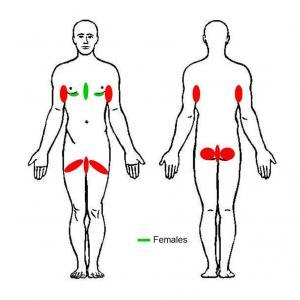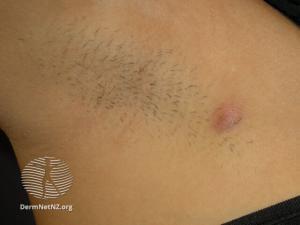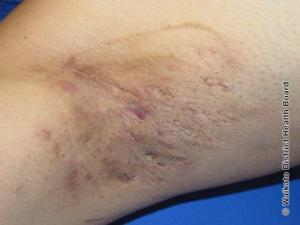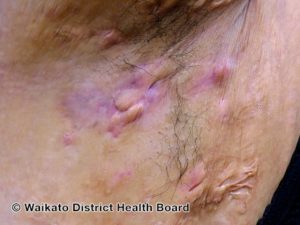Symptoms
Hidradenitis Suppurativa (HS) is often misdiagnosed, or simply not recognised to begin with! On many occasions it can take more than 7 years to receive a formal diagnosis of HS.
HS is often mistaken for a once-off boil or abscess, an ingrown hair, or other type of infection.
There are several early warning signs that if recognised in time can lead to an early diagnosis and much more effective treatment to stop the disease progressing and bring some relief.
When it first develops, HS can have symptoms that range from clusters of blackheads (little pits or tiny tunnels in your skin), mild itching and discomfort, to the appearance of red, tender, and swollen areas. These can range in size from from a pea to much larger (e.g., tennis ball).
Click on the symptoms below for further detail.

Image source: https://ehsf.eu/hidradenitis-suppurativa/ (Accessed 2021)
Physical Symptoms
More detailed information can be found at the following sources
The Stages of HS
HS is usually classified into three stages called Hurley staging, named after the surgeon who proposed it.

Hurley Stage I
This may be a single lesion without sinus tract (tunnel) formation.

Hurley Stage II
Single or multiple lesions, but with limited tunneling.

Hurley Stage III
Multiple lesions, with more extensive tunnels and scarring. It involves an entire area of the body
HS severity is divided into three stages, with the least severe being Hurley Stage I, and the more severe being Hurley Stage III.
Hurley staging allows doctors to assign a severity level to HS, but it does not account for other factors such as disease activity, the pain, or the impact on a person’s quality of life. As a result, many different measurements/tools have been developed to assess HS severity to take these other factors into account.
Currently, there are > 30 severity assessment measurements/tools in use but all doctors still refer to and use the Hurley staging system.
